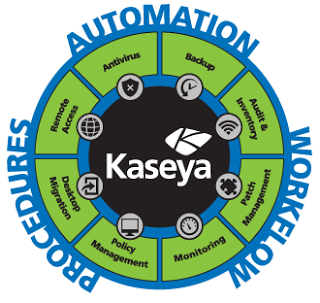

| Visitors Now: | |
| Total Visits: | |
| Total Stories: |

| Story Views | |
| Now: | |
| Last Hour: | |
| Last 24 Hours: | |
| Total: | |
What is IT asset management?
Friday, November 9, 2012 7:04
% of readers think this story is Fact. Add your two cents.
If you’re working in IT or even in the business world generally, you may have heard the term ‘IT asset management’ banded about. Do you understand what it actually means though? Well, the clue is in the name!
IT asset management (or IAM) refers to a series of processes or procedures (also referred to as ‘practices’) that are designed to unite certain inventory, financial and contractual functions. Uniting these functions can help an IT division in its decision-making and support its life cycle management. Still sound complex? Read on…
The basics
Basically, those tasked with a company’s IAM will gather in-depth information relating to a company’s software and hardware inventory. Using this intelligence, the company and its IT division can then make informed, considered decisions regarding where the company re-distributes its hardware and software. Factors taken into account during this process are the hardware and software’s life span, overall efficiency and associated costs.
In addition to supporting well-thought-through, confident decisions about a company’s IT assets, strong IAM can offer a business many benefits. Firstly, it can help improve the meaning of said decisions. Consider this – you, as a business owner, are questioned by your board on why you re-distributed a certain piece of hardware to a different division in your business. In simple terms – why did you leave Tom in Accounts without the latest computer model, just so Sophie in Operations could use it? By using the information gleaned by your IAM software or team, you can provide firm evidence and reasoning for your decision.
So what will this evidence show? Well, a number of things, but namely the financial repercussions of making this move. How did giving Sophie the computer benefit the company’s overall profits? Does her work generate more profit for the business, hence the need to make her equipment as reliable and speedy as possible? Perhaps Tom can work just fine from his older laptop, which is in solid working condition. It’s likely that the reasoning will be deeper and more detailed than that, but at the crux of it, it’s about demonstrating how your move could support your wider financial objectives.
What else?
Well, undertaking IAM can also make a business run more efficiently – as well as give you (its owner) full control over your IT inventory. You can determine what hardware is speeding up your processes, what software is slowing them down and where each piece could be put to best use… much like the case of Tom and Sophie. This basically can streamline a business’ operations; making it run as efficiently as it possibly can. Increased efficiency equals increased productivity and therefore – you guessed it – increased profits.
What’s more, an investment in IAM can improve the overall value and lifespan you receive from your IT investments. If you can squeeze a couple more years out of a particular piece of hardware, by putting it to use in a different environment, you’re effectively getting more for your money. If, after doing an assessment of your software inventory, you find that you can procure multiple licenses for a program or that it could work better for one department than another, then you’ve effectively boosted your return on investment.
All in all, that’s why IAM is so important… it’ll simply just make your business better. Who wouldn’t want that?
John Stephen is a consultant. He is also an IT Support Technician, Internet Marketer and he loves to research with IT asset management (or IAM). He recommends http://www.kaseya.co.uk/ which provides the resources on strategic business goals while maintaining the availability, security and stability of your IT environment.
Techno World – an Online Technology Blog brings you the latest computer technology and tech news from all over the world. Techno World covers a range of latest emerging new digital technology, seo, web designing, internet marketing, tech gadgets, cool geek gadgets, electronics, mobile phones, robotics and inventions. Join us for technology and computer news and remain updated.”
2012-11-09 06:00:21
Source: http://www.technoworldnews.com/2012/11/what-is-it-asset-management.html
Source:




